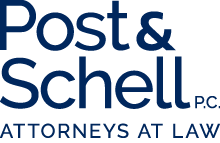

Affordable Care Act Penalties Under the Internal Revenue Code, Part I

Introduction
The Affordable Care Act (the “Act”) added reporting requirements for large employers concerning health care insurance in section 6056 of the Internal Revenue Code. In addition, the Act also imposed substantive standards for minimum essential coverage to be offered by large employers, including cost standards.
Both the reporting requirements and the substantive standards are enforced through penalties that are administered by the IRS. Practitioners have been seeing these cases for a while now and some trends are emerging that merit discussion.
My discussion of penalties under the Act will proceed in a series of segments: In this part, I will review the reporting requirements and the associated penalties; in a second part, I will review penalties under section 4980H, which serve to enforce the Act’s requirements for minimum essential coverage. Procedural measures to challenge penalties will either be covered in conjunction with section 4980H or in a stand-alone segment.
Basic Reporting Requirements
Section 6056 of the Code imposes certain reporting requirements on applicable large employers (“ALEs”). An ALE is an employer who had an average of at least fifty full-time employees in the preceding calendar year.1 Specifically, an information return is required to be filed by the ALE certifying whether it offers to full-time employees, along with their dependents, an opportunity to enroll in “minimum essential coverage.”2 If the ALE certifies that it did so, it must also provide data on various details, such as waiting periods, months when coverage was available, the monthly premium for the lowest cost option in each enrollment category, the employer’s share of the cost of coverage, along with the number of full-time employees for each month of the calendar year, and the name, address, and TIN of each full-time employee, as well as the months that each full-time employee was covered.3
The information outlined above is reported to the IRS on Form 1094-C, and it is designed to permit the IRS to administer the employer shared responsibility payment, a penalty under section 4980H of the Code.
In addition to the information return on Form 1094-C, the Code requires that the employer issue individual statements to its full-time employees.4 This is done through the issuance of Form 1095-C.
Reporting Alternatives
The regulations under section 6056 introduce optional reporting methods for the employer.5 The first involves a “qualifying offer,” which is an offer to a full-time employee “of minimum essential coverage providing minimum value at an employee cost for employee-only coverage not exceeding 9.5 percent of the mainland single federal poverty line, and that includes an offer of minimum essential coverage to the employees’ spouses and dependents.”6 The employer then reports to the IRS the relevant information for each full-time employee who received a qualifying offer.7 It also issues individual statements to the relevant employees.8 To the extent that full-time employees do not receive qualifying offers, then reporting for them is handled under the basic method outlined above.
The second alternative reporting method involves 98 percent offers.9 This permits an employer to avoid identifying whether a particular employee is a full-time employee or report the number of its full-time employees “if it certifies that it offered minimum essential coverage providing minimum value that was affordable under section 4980H to at least 98 percent of the employees (and their dependents) with respect to whom it reports for purposes of section 6056.”10
The Penalty Regime
While the reporting requirements outlined above were added to the Code with the Affordable Care Act, Congress did not develop a new penalty structure to enforce them. Instead, it relied on the existing enforcement mechanisms used for information returns, sections 6721 and 6722 of the Code. Historically, these two provisions were encountered by employers who had compliance problems with their W-2 filings. They now are being used to enforce the Affordable Care Act reporting requirements.
Section 6721 addresses the failure to file correct information returns; it applies where an employer fails to file on time or fails to provide all required information.11 The basic penalty is $250.00 per return, which is subject to a calendar year cap of $3,000,000.12 The penalty is indexed. While $250.00 per violation does not sound onerous, for large employers the numbers can be quite significant.
Obviously, the best way to avoid the penalty is to comply with the reporting requirements scrupulously. Most employers, however, are to some extent relying upon a vendor to handle the filings and lack complete control over the process. When there are errors, prompt correction can lower the penalty:
- A correction within thirty days of the filing deadline drops the basic penalty to $50.00 per violation and the calendar year limit to $500,000.13
- A correction made more than thirty days after filing will qualify for penalty relief if it is made by August 1; the penalty per violation is lowered to $100.00, and the calendar year limit is $1,500,000.14
Employers with average annual gross receipts for the past three years that do not exceed $5,000,000 also qualify for relief.15 Specifically, employers meeting that test have a reduced calendar year limit for the basic penalty of $1,000,000 instead of $3,000,000.16 These employers qualify for a reduced calendar year limit for prompt corrections as well.17
The penalty does not apply to de minimis errors.18
The provisions for penalties associated with information returns are mirrored in section 6722, which applies when there is a failure to issue payee statements when due or a failure to include all required information on payee statements.19 The basic penalty structure of $250.00 per violation with an annual limit of $3,000,000 is the same as section 6721.20 There are again reductions available for prompt corrections. The penalty will not apply in the event of de minimis violations.22 Employers with gross receipts below $5,000,000 again have lower calendar year limits under section 6722.23
Because the triggers for a section 6722 violation include both a failure to distribute statements in a timely matter and a failure to provide all required information, a violation of the reporting requirements will typically trigger both a section 6721 penalty for the reporting failure and a section 6722 penalty for the payee statements, which reinforces the importance of getting the reporting right or promptly correcting any errors.
Penalty Defenses
In addition to the provisions for corrections to reduce penalties, as well as the opportunity to avoid penalties for de minimis errors that are built into sections 6721 and 6722, the Code also provides a reasonable cause defense.
Section 6724 provides in relevant part as follows: “No penalty shall be imposed under this part with respect to any failure if it is shown that such failure is due to reasonable cause and not to willful neglect.”24 Section 6724 appears in Subtitle F, Chapter 68, Subchapter B, Part II of the Internal Revenue Code, which also includes sections 6721, and 6722, making those penalties subject to a reasonable cause defense. For good measure, the reporting and statement requirements imposed under section 6056 are explicitly referenced in section 6724:
- First, the return required under 6056(a) is included in the definition of “information return;”25 and
- Second, the payee statement required by section 6056(c) is included in the definition of “payee statement.”26
The heading on section 6724(a) characterizes the reasonable cause defense as a penalty “waiver,” and that characterization is carried over in the relevant regulations.27
The regulations adopt a detailed definition of “reasonable cause,” which requires the taxpayer to show that the failure to comply was subject to significant mitigating factors, or it arose from events beyond the filer’s control; in either event, the filer must have “acted in a responsible manner.”28 Each of these elements has a specific definition in the regulations.
The definition of mitigating factors invites taxpayers to make an individualized argument tied to their circumstances, as the term is defined by citing two examples and then indicating that they are not exclusive.29 Mitigating factors include a taxpayer’s unfamiliarity with the particular form.30 They also include a prior history of compliance.
In examining a taxpayer’s compliance record,
significant consideration is given to -
(i) Whether the filer has incurred any penalty under §§ 301.6721-1, 301.6722-1, or 301.6723-1 in prior years for the failure (or under parallel provisions of prior law), and
(ii) If the filer has incurred any such penalty in prior years, the extent of the filer's success in lessening its error rate from year to year.32
By its terms, this regulation calls for a flexible approach to compliance history by permitting a taxpayer to invoke an improvement in its error rate as a factor, rather than making a prior penalty assessment dispositive.
The regulations take a similar approach to defining “events beyond a filer’s control,” citing non-exclusive circumstances that will meet the standard.33 A variety of different circumstances fall within the scope of this provision, including unavailability of business records, actions undertaken by an agent, and actions by payees and others providing necessary information.34
Since many businesses rely upon payroll service providers to handle their ACA-related reporting obligations, the requirements to show reasonable cause based upon actions of an agent merit review. Here is what the regulations provide:
In order to establish reasonable cause under paragraph (c)(1) of this section due to actions of an agent, the filer must show the following:
(i) The filer exercised reasonable business judgment in contracting with the agent to file timely correct returns or furnish timely correct payee statements with respect to which the failure occurred. This includes contracting with the agent and providing the proper information sufficiently in advance of the due date of the return or statement to permit timely filing of correct returns or timely furnishing of correct payee statements; and
(ii) The agent satisfied the reasonable cause criteria set forth in paragraph (b) or one of the reasonable cause criteria set forth in paragraph (c)(2) through (6) of this section. 35
This is not a taxpayer-friendly provision. For one thing, if the agent meets the reasonable cause criteria, it is not altogether clear why the filer should also need to show that it exercised due care in selecting its agent; that would appear to be a relevant factor if the filer wanted to argue that it relied upon a reputable payroll service provider that made a mistake. As will be seen, penalty relief is not available in that situation, so it is hard to understand the point of the requirement that a filer exercise reasonable care in selecting the vendor if it timely meets its obligations.
Moreover, it is not clear what evidence would be needed to show that the selection of the agent was reasonable. Businesses should retain any background materials provided by the agent that comment on its qualifications, and document any other factors that were involved in the selection process, including advice from a tax professional, such as an accountant or a tax lawyer.
In addition, the fact that the agent must independently demonstrate reasonable cause indicates that penalty relief will not be available where the taxpayer relied upon an agent who failed to act reasonably. While that may sound unfair, it is consistent with the standards governing timely filing of income tax returns.36
The final factor in establishing reasonable cause is that the filer must have acted in a responsible manner. To meet this test, the filer must show that it exercised due care, “which is that standard of care that a reasonably prudent person would use under the circumstances in the course of its business in determining its filing obligations and in handling account information such as account numbers and balances.”37 The filer will also need to show that it “undertook significant steps to avoid or mitigate the failure.”38 The regulation offers a non-exclusive list of measures ranging from requesting extensions, taking measures to avoid problems that are foreseeable, acting to address the cause for the failure, and making corrections.39 These provisions in the regulations suggest that businesses should document their process for providing data to their payroll service that is required for their ACA-related reporting requirements, so that they can potentially establish that they acted in a responsible manner. Some additional practical suggestions follow.
Practical Implications
In dealing with the IRS, if you cannot document it, it did not happen. Accordingly, businesses should plan to document the process used to gather information and convey it to their external vendor, identifying each step in the process and the employees responsible.
Businesses should also adopt procedures to assure that the information returns and employee statements are carefully reviewed both prior to and subsequent to filing. The review after filing will permit the business to avail itself of the penalty relief that it is available for prompt corrections noted above.40 This approach also protects the business by reducing the cost when the vendor issuing the information returns and employee statements makes errors in the final documents that are not consistent with the filer’s instructions.
Disclaimer: This post does not offer specific legal advice, nor does it create an attorney-client relationship. You should not reach any legal conclusions based on the information contained in this post without first seeking the advice of counsel.
Footnotes:
1 See I.R.C. § 4980H(c)(2)(A).
2 I.R.C. § 6056(b)(2)(B).
3 I.R.C. § 6056(b)(2)(C), (D), (E).
4 I.R.C. § 6056(c)(1).
5 Treas. Reg. § 301.6056-1(j).
6 Treas. Reg, § 301.6056-1(j)(1)(i).
7 Treas. Reg. § 301.6056-1(j)(1)(ii).
8 Treas. Reg. § 301.6056-1(j)(1)(iii).
9 Treas. Reg. § 301.6056-1(j)(2).
10 Id.
11 I.R.C. § 6721(a)(2).
12 I.R.C. § 6721(a)(1).
13 I.R.C. § 6721(b)(1).
14 I.R.C. § 6721(b)(2).
15 See I.R.C. § 6721(d)(2).
16 I.R.C. § 6721(d)(1)(A).
17 See I.R.C. § 6721(d)(1)(B) (calendar year limit for thirty-day corrections drops to $175,000 from $500,000); I.R.C. § 6721(d)(1)(C) (calendar year limit for corrections made by August 1 drops to $500,000 from $1,500,000).
18 I.R.C. § 6721(c).
19 See I.R.C. § 6722(a)(2).
20 See I.R.C. § 6722(a)(1).
21 I.R.C. § 6722(b).
22 I.R.C. § 6722(c).
23 I.R.C. § 6722(d).
24 I.R.C. § 6724(a).
25 I.R.C. § 6724(d)(1)(B)(xxv)
26 I.R.C. § 6724(d)(2)(HH).
27 Treas. Reg. § 301.6724-1(a)(1) (providing that penalty “is waived if the failure is due to reasonable cause and is not due to willful neglect”).
28 Treas. Reg. § 301.6724-1(a)(2).
29 Treas. Reg. § 301.6724-1(b) (“mitigating factors include, but are not limited to . . .”).
30 Treas. Reg. § 301.6724-1(b)(1) (mitigating factors include “[t]he fact that prior to the failure the filer was never required to file the particular type of return or furnish the particular type of statement with respect to which the failure occurred”).
31 Treas. Reg. § 301.6724-1(b)(2).
32 Treas. Reg. § 301.6724-1(b)(2).
33 Treas. Reg. § 301.6724-1(c)(1) (“Events which are generally considered beyond the filer’s control include but are not limited to - . . .”).
34 Treas. Reg. § 301.6724-1(c)(1)(i), (iv), (v).
35 Treas. Reg. § 301.6724-1(c)(5).
36 See United States v. Boyle, 469 U.S. 241, 251 (1985) (“In short, tax returns imply deadlines. Reliance by a lay person on a lawyer is of course common; but that reliance cannot function as a substitute for compliance with an unambiguous statute.”).
37 Treas. Reg. § 301.6724-1(d)(1)(i).
38 Treas. Reg. § 301.6724-1(d)(1)(ii).
39 Treas. Reg. § 301.6724-1(d)(1)(ii)(A)-(D).
40 See I.R.C. § 6721(b)(1) (base penalty for information returns reduced to $50.00 from $250.00 where failure is corrected in thirty days); I.R.C. § 6722(b)(1) (base penalty for employee statements reduced to $50.00 from $250.00 where failure is corrected in thirty days); I.R.C. § 6721(b)(2) (base penalty for information returns reduced to $100.00 from $250.00 where failure is corrected by August 1); I.R.C. § 6722(b)(2) (base penalty for employee statements reduced to $100.00 from $250.00 where failure is corrected by August 1).


